The unsolved mystery of Gilmerton Cove
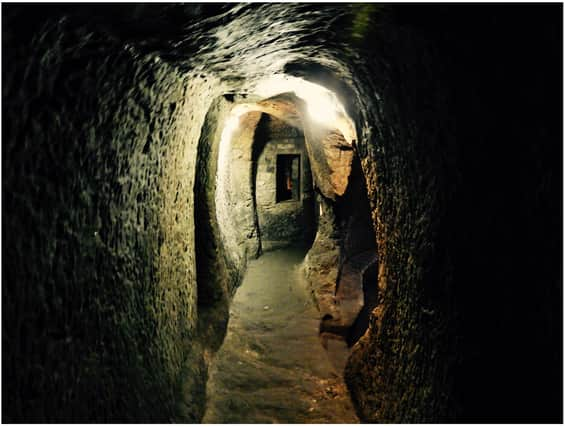

The intriguing subterranean dwelling of Gilmerton Cove has been shrouded in mystery since a 1906 Scotsman article poked holes in its origin story.
Behind a modest door on Drum Street, Gilmerton is an incredible network of caves and passageways, hewn from the sandstone by hand 10-15 feet below the street of the ex-mining town.
Advertisement
Hide AdAdvertisement
Hide Ad300-year-old pickaxe scars appear on every inch of wall and ceiling and stone ‘furniture’ in the form of tables, benches and even a bed, bear the squares and compasses of stonemasons long dead.
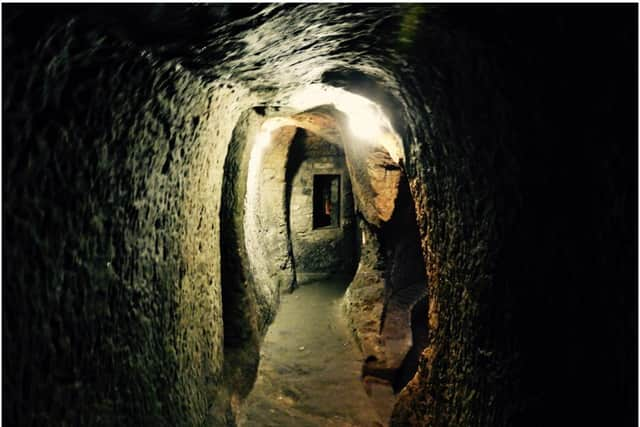

A scarce mention of the cove appears in a Liberton Parish Minister’s testimonial relating to the cove’s supposed craftsman, George Paterson.
The local blacksmith claimed to have hewn the rooms and passages from the rock between 1719 and 1724. Thereafter, his family lived there until his death in 1737.
The eerie caverns of Gilmerton Cove
Church records indicate the Patersons used one room as a public house to sell alcohol – not unusual at the time, but once landing him in hot water when he disrespected the Sabbath. He was spared punishment by telling the judge Mrs Paterson had left the back door unlocked.
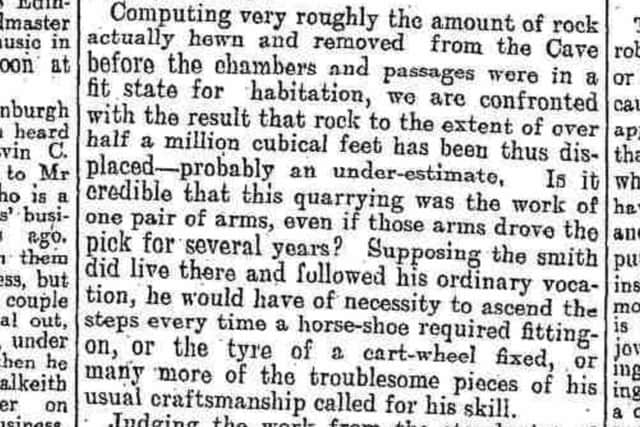

On Wednesday 15th August 1906, a front page column by The Scotsman writer F.R. Coles digs deeper into George Paterson’s version of events - commonly referred to as ‘The Tradition’.
Coles, once Assistant Keeper of the National Museum of Antiquities, considers the legitimacy of Paterson’s claim, writing: “So remarkable a feat as the hewing-out of a series of chambers in solid rock and the dwelling therein of a blacksmith and his family would surely help to keep green the record of the man who performed it.
“But the Parish records are silent and locally, nothing more is known of Paterson than what is contained in the statement by the Parish minister of 1782.”
An excerpt of the 1906 article
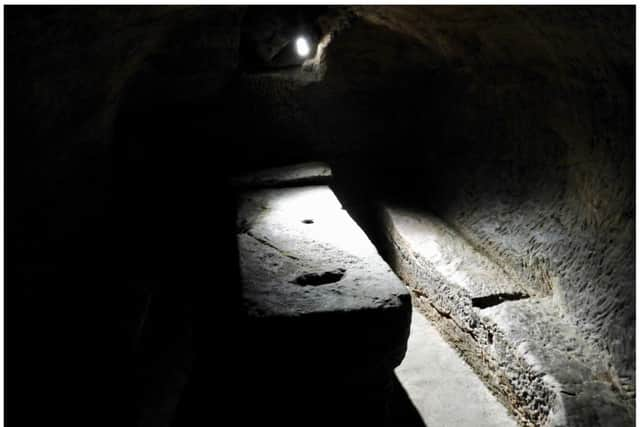

Coles is considered the first to challenge The Tradition. He follows up by mathematically estimating the supposed workload for one man and scoffing at the superhuman ability he would have possessed in order to complete the dwelling in five years.
Advertisement
Hide AdAdvertisement
Hide Ad“Computing very roughly the amount of rock actually hewn and removed from the Cave (sic) before the chambers and passages were in a fit state for habitation, we are confronted with the result that rock to the extent of over half a million cubic feet and has thus been displaced,” writes Coles.
“Is it credible that this quarrying was this one pair of arms, even if those arms drove the pick for several years?”
Coles isn’t the only one with doubts about The Tradition. Rosslyn Tours, run by Margaretanne Dugan, finds it hard to believe the elaborate caves are the work of one man and his pickaxe.
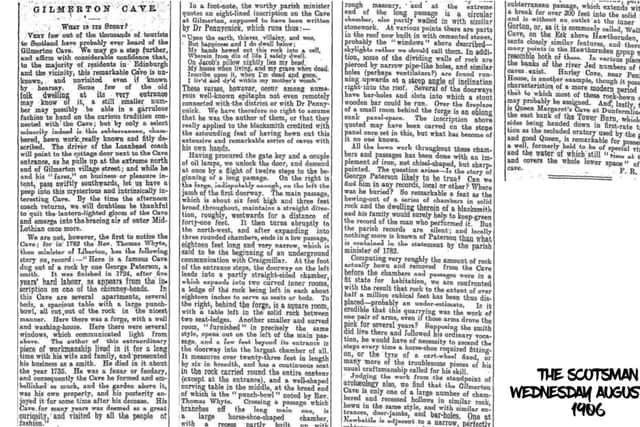

Coles doesn’t go into detail about the suspicious features of the dwelling; a well under the street leads nowhere; a forge carved from the same sandstone, “would explode” if hot coals had been hit with a hammer upon it, Margaretanne explains.
In revisiting the Gilmerton cave with a 20th Century perspective, the Scotsman writer sparked more than a century of theories attempting to explain the dwelling’s origin and purpose.
It looks like a bed, or is it a table
The most realistic explanation granted to the Rosslyn Tours and Gilmerton Cove is that Paterson Merely stumbled upon the cave and used it as an underground pub, but that doesn’t sit quite right with Rosslyn Tours either.
“It is quite elaborate for a pub,” Margaretanne says, “Why not just wooden furniture in one large chamber when it was only illegal to drink on a Sunday?”
It has since been linked to Covenanters, the Knights Templar and Julian Spalding has proposed it was once an ancient Druid temple. The prominent antiquities expert has suggested that it was filled in many hundreds of years before Paterson discovered the entrance and the smith merely cleared it out.


Advertisement
Hide AdAdvertisement
Hide AdAdvanced 3D imaging techniques have revealed another subterranean chamber across the Drum Street road, suggesting the site is actually much bigger than is currently known.
Gilmerton Cove grew to be more mysterious than ever after The Tradition was debunked, thanks to the meticulous analysis of a 1900’s Scotsman writer.
Try and decipher the clues behind the mystery of Gilmerton Cove. Tours by appointment can be booked through their website: gilmertoncove.org.uk
Click the image below to view the whole 1906 article by F.R Coles in The Scotsman: